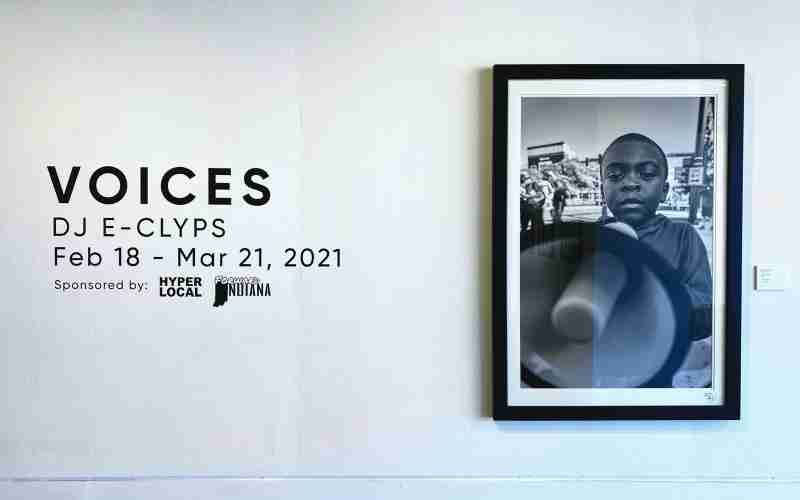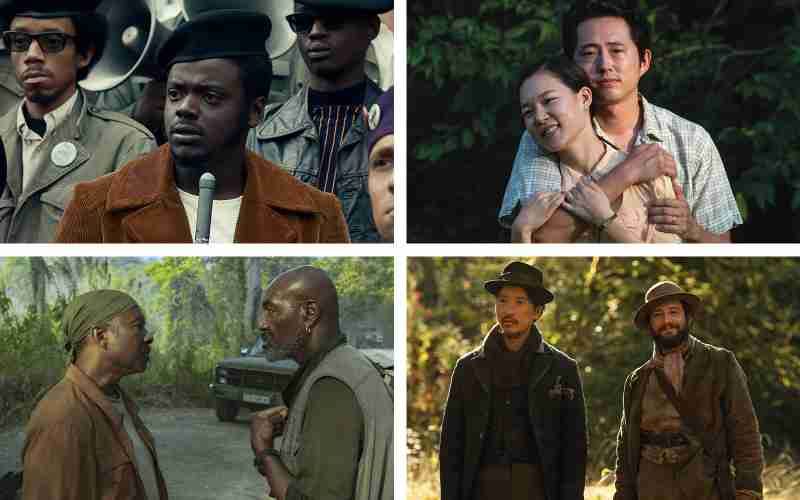Music was the first form of artistic expression for DJ E-Clyps, his first opportunity to express himself to the world.
But one unsatisfying year as a drummer in the South Side High School marching band taught him that he truly needed to march to his own beat.
Despite his success as a musician, a DJ, and a music producer, it was through a camera lens that E-Clyps found his own true artistic voice.
Exhibition and Book
It’s only appropriate then that his latest artistic venture is called Voices, the title of his recently published book and current Artlink exhibit.
The plural “Voices” is significant since it is more than his own voice he seeks to amplify.
His move from musical expression to photography began with a job at a long-beloved and now much-lamented downtown staple that was a haven for anyone who loved photography and videography.
“I got into photography and videos about six years ago when I started working at Sunny Schick,” E-Clyps said. “I learned a lot about it from Bill Christie when I worked there and stayed until it closed in 2017.
“He taught me to appreciate things that I see everyday. If you take the same route to work for five years, if you do it with a camera, you’ll see things you’ve never seen before.”
Christie, Sunny Schick’s final owner who closed the business when he decided to retire, also suggested his young employee check out the work of Gordon Parks, an African American photographer who focused his work on race in America.
E-Clyps began looking at photography from the 1960s and ’70s as well as that of the Harlem Renaissance.
This put the art of photography in chronicling social issues in a fresh light, something that became important as he headed downtown last summer to chronicle the Black Lives Matter protests.
Intimate Style
But E-Clyps didn’t stand on the sidelines. He preferred a more intimate style of photography.
“My style is very personal, so I always ask permission before I take any photographs,” he said. “I’m not the type of photographer to just sit on the grassy knoll or a street photographer that takes photos from far away. I like to engage with people as I’m taking the photos, and I got to speak to people last year and see the human side of the protests.”
E-Clyps began posting photos on social media, and it wasn’t long before the demand for a book began to grow. That left him with some serious work to do.
“That was an experience,” he said. “I took 2,167 photos from the first day of the protests until the last day, and I had to go through all of them to decide which ones would go into the book. It put me more in touch with the photos, seeing people passionately protesting and doing something that meant a lot to them.
“And 98 percent were there for all the right reasons, and I wanted to document that as a photographer. I wanted to capture what was going on because I knew that there might be damage to buildings and businesses, and it would be easy for that narrative to become the focus and the real events to get lost in translation.”
Soon Artlink was seeking out E-Clyps, asking him to pull enough of his photos for an exhibit.
“When it came to how they put the exhibit together, I trusted the Artlink staff to do that,” he said. “This is my first exhibit so I don’t have experience laying out a gallery. I think they did an amazing job.”
Unusual Approach
The fact that Artlink approached E-Clyps is somewhat unusual, but there was a reason it played out as it did.
Lynette Scott, who served on Artlink’s board of directors before becoming executive director last June, was seeking new perspectives for their gallery. The Fort Wayne native spent several years in Oakland, Calif., before moving back here six years ago, and she wanted to diversify the artists represented in their space.
“As a non-profit gallery, it’s important to represent those who have been historically excluded,” Scott said. “He didn’t apply, which is the normal process. We asked him if he would bring an exhibit for our gallery, and we left it up to him which photos would be included, then he selected the frames. Once he dropped them off, we have to make it look its best by setting it up in the gallery.”
The exhibit lends itself perfectly to schools, from secondary to university. But because of recent restrictions, the gallery has taken steps to make it possible for the entire community to visit Voices virtually.
“It’s not something Artlink has done in the past,” Scott said. “We’ve been hosting virtual exhibits for the last year, but we hadn’t done school groups. But we received interest from a couple of teachers, and we think it’s important for kids to have these kinds of opportunities to see the work and hear from the artist. And since this is a Fort Wayne event, maybe some of them will see themselves in these images.”
E-Clyps is happy that schools will have a chance to experience the exhibit and is happy with his first chance to share his work in a gallery.
As he looks ahead, he wants to build on this experience and continue to use his camera to share his work chronicling and sharing with his community.
“Eventually I’d like to have a space downtown,” he said. “I think it’s important for people of color to have places downtown that represent us because we feel like downtown isn’t really for us. I want us to be truly represented in the community.”
 Submit Your Event
Submit Your Event


